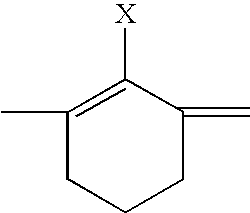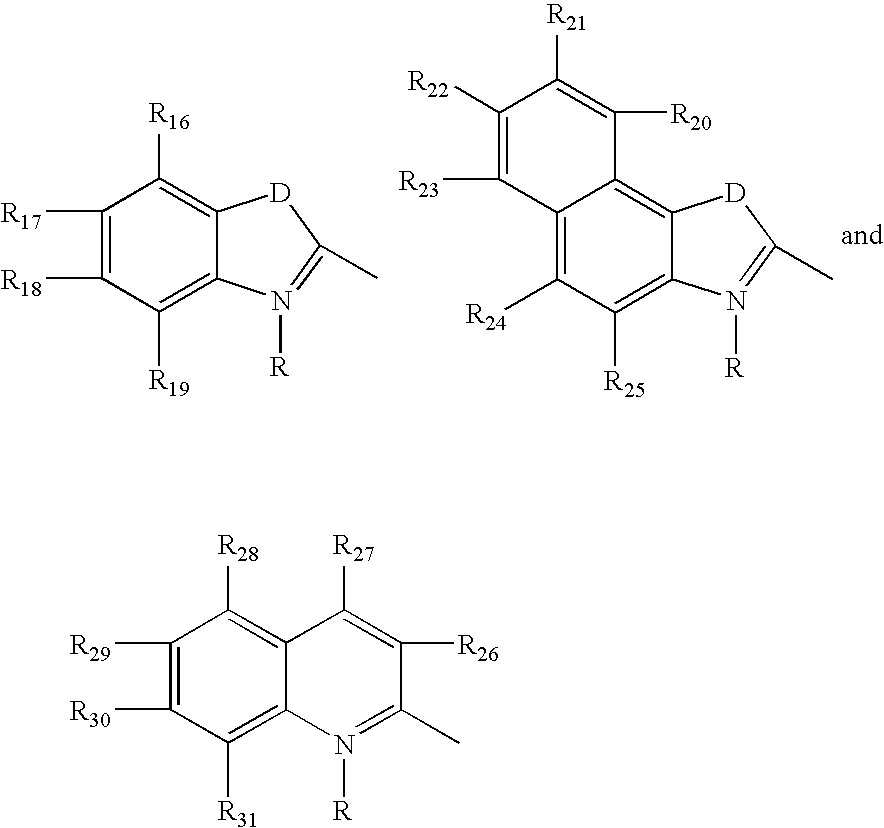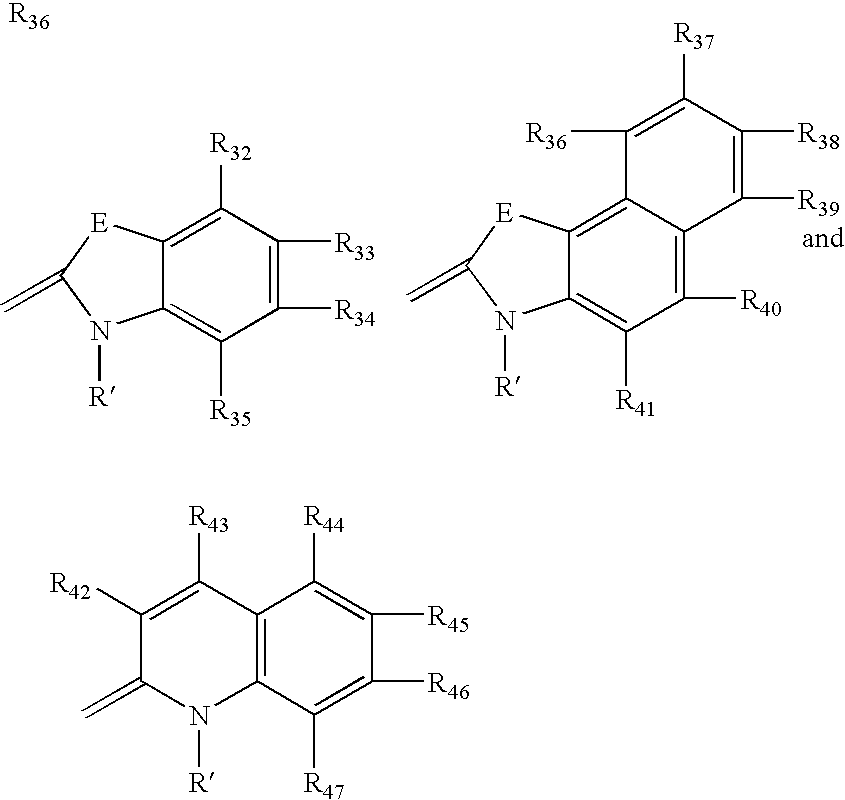Fluorescent membrane intercalating probes
a technology of membrane intercalation and probes, which is applied in the field of fluorescence and membrane intercalation compounds, can solve the problems of difficult selection of more than three or four visible emitting fluorochromes attachable to cells, inability to study cellular interactions and responses in vivo, and currently available protein and membrane labels, such as molecular probes, can not solve the problem of dyes unsuitable for optical imaging in intact animals,
- Summary
- Abstract
- Description
- Claims
- Application Information
AI Technical Summary
Benefits of technology
Problems solved by technology
Method used
Image
Examples
example 1
Synthesis of Probe with 667 nm Emission (8)
[0054] A membrane-probe with 667 nm Emission was prepared according to the following synthetic reaction Scheme 1.
Preparation of 1-tetradecyl-2,3,3-trimethylindolinium Iodide (compound 5)
[0055] Tetradecyl-1-(4-chlorobenzenesulfonate): To a stirred solution of tetradecanol (26.3 g, 0.123 mol, Aldrich Chemical Co., Milwaukee, Wis.) and 4-chlorobenzenesulphonyl chloride (28.48 g, 0.123 mol, Aldrich) in dichloromethane (500 ml) at room temperature is added triethylamine (28 ml, Aldrich) in dichloromethane (200 ml) dropwise. The resulting solution is stirred for 48 hours. The reaction mixture is then washed with water (3×400 ml) and the dichloromethane layer dried over sodium sulfate and concenetrated. The crude solid obtained was recrystallized from methanol to provide pure tetradecyl-1-(4-chlorobenzenesulphonate)(29.9 g, 62%) as a white solid. 200 MHz proton NMR (CDCl3): 0.88 (t, J=7.0 Hz, 3H), 1.10-1.80 (m, 24H), 4.05 (t, J=7.0 Hz, 2H), 7....
example 2
Synthesis of FR Probe with 713 nm Emission (13)
[0063] This compound prepared from compound 9 (available from Fisher / Acros Chemicals) as shown in Scheme 2 below using similar types of reactions and conditions to those described for compound (8).
example 3
Synthesis of FR Probe with 682 nm Emission (25)
[0064] This compound was synthesized by coupling of intermediate 6 from reaction scheme 1 with intermediate 10 of reaction scheme 2 under standard conditions. The compound was purified by column chromatography using standard conditions. This compound provides a far red emitting probe with absorbance and fluorescence properties intermediate to compound (8) and compound 13. The final isolated yield for this product was slightly lower (11.5%) than for
[0065] Compound (8) and compound (13) due to difficulty in removing the symmetrical byproduct formed by dimerization of intermediate 7.
PUM
| Property | Measurement | Unit |
|---|---|---|
| wavelength | aaaaa | aaaaa |
| depth | aaaaa | aaaaa |
| depth | aaaaa | aaaaa |
Abstract
Description
Claims
Application Information
 Login to View More
Login to View More - R&D
- Intellectual Property
- Life Sciences
- Materials
- Tech Scout
- Unparalleled Data Quality
- Higher Quality Content
- 60% Fewer Hallucinations
Browse by: Latest US Patents, China's latest patents, Technical Efficacy Thesaurus, Application Domain, Technology Topic, Popular Technical Reports.
© 2025 PatSnap. All rights reserved.Legal|Privacy policy|Modern Slavery Act Transparency Statement|Sitemap|About US| Contact US: help@patsnap.com



